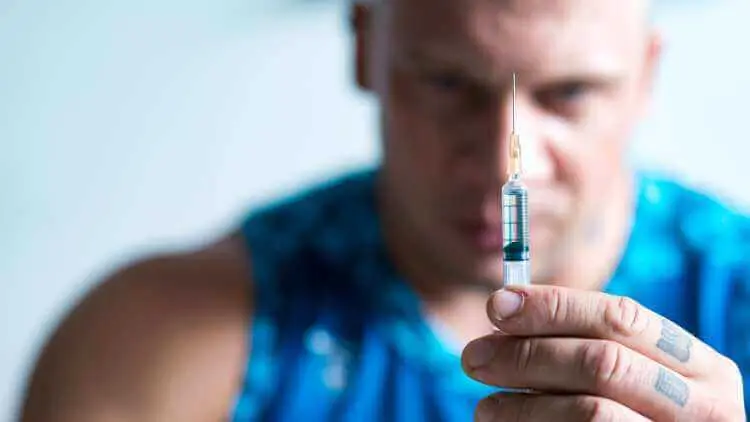Osteoporosis is a chronic condition characterized by the weakening of bones, making them fragile and more prone to fractures. Anabolic steroids, which are synthetic substances similar to the male sex hormone testosterone, have been studied for their potential in treating osteoporosis. They work by increasing protein synthesis within cells, resulting in the buildup of cellular tissue, particularly in muscles—a process that could also lead to increased bone density.
The utilization of anabolic steroids in treating osteoporosis centers around their anabolic effects — promoting bone growth and strength. These effects offer a possible counter to the catabolic state that osteoporosis causes, where bone is broken down faster than it is created. Studies have explored various anabolic steroids, assessing their clinical efficacy and safety profiles. While there are risks associated with their use, such as hormonal imbalances and other side effects, the targeted application of these steroids in osteoporosis treatment could outweigh potential drawbacks for certain patient populations.
Cost-effectiveness and accessibility are critical considerations in the broader adoption of anabolic steroids for osteoporosis treatment. As with any medical intervention, the benefits must be evaluated alongside the financial impact and ease of patient access to these therapies. Questions often arise regarding the practicality of anabolic treatments in day-to-day patient management, insurance coverage, and the capacity for widespread clinical use, making these factors essential in the overall assessment of anabolic steroids for osteoporosis.
Quick Summary
- Anabolic steroids may help in increasing bone density and strength in osteoporosis patients.
- The clinical efficacy and safety of anabolic steroids require careful consideration due to potential side effects.
- The cost-effectiveness and accessibility of anabolic treatments are vital for integrating them into osteoporosis management strategies.
Understanding Osteoporosis

Osteoporosis is a condition characterized by weakened bones and an increased risk of fractures. It is integral to comprehend the underlying bone biology and epidemiological data to fully grasp the impact and management of this disease.
Bone Biology and Osteoporosis
Osteoporosis occurs when there is an imbalance between bone formation and bone resorption, two fundamental processes in bone biology. This imbalance leads to a reduction in bone mineral density (BMD), compromising bone strength. During bone formation, cells called osteoblasts create new bone matrix, contributing to the growth and maintenance of the skeletal system. Conversely, osteoclasts are responsible for bone resorption, which involves the breakdown of bone tissue.
The natural aging process can lead to a decline in BMD. In postmenopausal women, the drop in estrogen levels accelerates bone resorption, which can lead to osteoporosis and a heightened risk of vertebral and hip fractures. Osteoporosis is typically silent until a fracture occurs, drastically highlighting the importance of understanding and monitoring bone health, especially bone density.
Epidemiology of Osteoporosis
Osteoporosis is a prevalent condition, especially in older adults, and is a major public health concern due to its association with disability and mortality. The statistics reveal that:
- Postmenopausal women are at a significantly higher risk due to hormonal changes at menopause.
- Aging populations are prone to osteoporosis due to the natural decrease in bone density over time.
- Individuals with low bone mass are more susceptible to bone fractures.
Prompt identification and management in populations at risk are crucial, as hip fractures, in particular, carry a high risk of long-term disability and can be life-threatening.
Anabolic Treatments in Osteoporosis

Anabolic therapies play a pivotal role in treating osteoporosis by stimulating bone formation and increasing bone mass and strength.
Mechanisms of Anabolic Therapies
The primary mechanisms by which anabolic therapies improve bone density involve the stimulation of bone-forming cells, known as osteoblasts, and the enhancement of bone remodeling. Teriparatide and abaloparatide, synthetic forms of parathyroid hormone (PTH), bind to the PTH/PTHrP receptor on osteoblasts, promoting new bone formation. They are administered as daily subcutaneous injections and have been shown to significantly increase bone mineral density and reduce the risk of fractures in patients with osteoporosis.
Romosozumab is another anabolic agent that targets the bone formation pathway differently. It functions as a sclerostin inhibitor. Sclerostin is a protein that acts on the Wnt signaling pathway, which is critical for the regulation of bone growth. By inhibiting sclerostin, romosozumab enhances Wnt signaling, leading to increased osteoblast activity and bone formation.
Comparison of Anabolic Agents
Teriparatide and abaloparatide are comparable in their use as anabolic treatments for osteoporosis. However, differences exist between their molecular structures and duration of action, which may influence their effectiveness and safety profiles.
| Anabolic Agent | Mechanism of Action | Duration of Action |
|---|---|---|
| Teriparatide | Mimics PTH | Short-acting |
| Abaloparatide | PTHrP Analog | Short-acting |
| Romosozumab | Sclerostin Inhibitor | Long-acting |
While both teriparatide and abaloparatide are effective in increasing bone mass, abaloparatide may lead to a quicker anabolic response. Romosozumab, on the other hand, represents a different approach as a monoclonal antibody that may produce sustained increases in bone mass with less frequent dosing.
Denosumab is another agent used in the treatment of osteoporosis; however, it is not an anabolic agent but rather an antiresorptive medication. It works by blocking the formation and function of osteoclasts, which are cells that break down bone tissue.
Understanding the nuances between these anabolic agents helps healthcare providers tailor osteoporosis treatments to individual patient needs.
References
Clinical Efficacy and Safety

Anabolic steroids have been examined for their role in managing osteoporosis, particularly focusing on their ability to reduce fracture risk and the safety profile affecting patient treatment.
Fracture Risk Reduction
Vertebral fractures: Anabolic steroids, such as nandrolone, have displayed potential in reducing the incidence of vertebral fractures. They enhance bone mineral density (BMD) and facilitate the bone formation processes.
- Nonvertebral fractures: Limited studies suggest a potential decrease in nonvertebral fracture risk, however more extensive research is required.
- Hip fractures: Data indicates a positive correlation between anabolic steroid use and improved BMD, suggesting a possible reduction in hip fracture risk.
Side Effects and Adverse Reactions
Common side effects: Patients may experience side effects varying from acne and hair growth to more severe hypertension and liver dysfunction.
- Hypocalcemia: Anabolic steroid therapy can lead to transient decreases in serum calcium levels, necessitating careful monitoring.
- Osteonecrosis of the jaw: Though primarily associated with bisphosphonates, prolonged usage of anabolic steroids may pose a risk for osteonecrosis, albeit at a lower rate.
- Atypical femoral fractures: Anabolic steroid use has been linked to rare instances of atypical femoral fractures, but evidence is not conclusive and further research is needed.
- Safety profile: Overall, the safety profile of anabolic steroids for osteoporosis treatment urges caution, particularly considering long-term use and pre-existing conditions.
References
Treatment Strategies

Effective treatment of osteoporosis with anabolic steroids hinges on clear strategies that incorporate both monotherapy and combination therapy, tailored to individual patient needs. The administration of treatment involves careful consideration of dosage and therapeutic duration based on specific medical guidelines.
Monotherapy vs. Combination Therapy
Monotherapy involves the use of a single anabolic steroid, such as a recombinant human parathyroid hormone (PTH) analogue, to stimulate bone growth and increase bone density. Treatment with recombinant human PTH, a synthetic peptide, is often prescribed as a daily subcutaneous injection and is FDA-approved for osteoporosis management.
- Recombinant Human PTH: Approved as a monotherapy for treatment.
Combination therapy pairs an anabolic treatment, like synthetic PTH peptide, with antiresorptive agents. This dual approach can provide a complementary mechanism of action, where the anabolic agent builds bone while antiresorptive drugs, including bisphosphonates or monoclonal antibodies, slow its breakdown.
- Bisphosphonates: Common antiresorptive drugs; inhibit bone resorption.
- Monoclonal Antibodies: Another form of antiresorptive agents; block proteins involved in bone resorption.
Treatment Regimen and Administration
The treatment regimen for osteoporosis using anabolic steroids must be precisely defined, with the inclusion of any potential combination therapy. The Subcutaneous injection is typical for anabolic agents, which may need to be administered by healthcare professionals to ensure proper dosage and reduce complications.
- Frequency of Administration: Daily or less frequent, depending on the specific medication.
- Duration of Treatment: Determined individually; some anabolic treatments are limited to a two-year period.
It’s essential for healthcare providers to adhere to FDA guidelines to ensure patient safety and to optimize the therapeutic outcomes of the anabolic steroid treatment for osteoporosis.
Cost-Effectiveness and Accessibility

Osteoporosis treatments, especially when involving anabolic steroids, require a nuanced understanding of both economic and access-related factors to ensure optimal patient outcomes.
Economic Considerations of Osteoporosis Treatment
Bone fractures due to osteoporosis generate significant medical expenses, predominantly due to the cost of acute care and rehabilitation. Anabolic steroids, as one class of treatment options, may offer a cost-effective method for reducing the incidence of fractures, particularly in the hip – a site associated with high mortality rates. Hip fracture treatment alone can cost upwards of $30,000 in the first year post-injury. Moreover, indirect costs, such as lost workdays and caregiver expenses, add to the economic burden.
Insurance plays a crucial role in the affordability and subsequent accessibility of treatments. With insurance coverage, the cost of anabolic steroids for osteoporosis may be substantially reduced, mitigating the financial barrier for patients. However, coverage and eligibility requirements vary across insurance providers and plans, impacting patients’ access to these medications.
Access to anabolic steroids for osteoporosis treatment is not equal worldwide. High-income regions often have better infrastructure for diagnosis, treatment, and adherence support, improving treatment outcomes. By contrast, lower-income areas face hurdles such as limited availability of drugs and lower prioritization of osteoporosis as a health issue, leading to disparities in treatment accessibility.
Fracture risk reduction is a key element in evaluating the cost-effectiveness of osteoporosis treatments. Studies show that anabolic steroids can substantially lower the chance of subsequent fractures, thereby potentially reducing long-term care costs associated with repeated injuries.
Frequently Asked Questions

Anabolic treatments for osteoporosis can influence bone health. This section explores common queries regarding the use of anabolic steroids in managing this condition.
What are the potential side effects of using anabolic steroids for osteoporosis treatment?
The use of anabolic steroids may lead to side effects such as joint pain, swelling, and increased risk of heart disease. Long-term use can result in hormone imbalances and liver issues.
How does anabolic therapy aid in the management of osteoporosis?
Anabolic therapy helps increase bone formation and reduce the risk of fractures by stimulating osteoblast activity, which enhances bone mineral density and strength.
Can anabolic steroids significantly improve bone mineral density?
Yes, anabolic steroids have been shown to significantly improve bone mineral density by promoting the growth and mineralization of bone tissue.
What distinguishes teriparatide in the context of anabolic treatments for osteoporosis?
Teriparatide, a form of parathyroid hormone, directly stimulates new bone formation, making it unique among anabolic treatments for its ability to rapidly increase bone mass.
Are there any new anabolic agents for treating osteoporosis that show promise?
New anabolic agents, such as romosozumab, show promise by not only increasing bone formation but also decreasing bone resorption, offering a dual approach to treatment.
How does Evenity function as an anabolic agent in the treatment of osteoporosis?
Evenity (romosozumab) works by inhibiting the protein sclerostin, which increases bone formation and decreases bone resorption, thereby improving bone mass and reducing fracture risk.
Dr. Grant Fourie, a specialist in male hormones, is based in Cape Town, South Africa. He provides comprehensive treatments for conditions related to low testosterone, such as erectile dysfunction, fatigue, and mood changes. His methods include hormone replacement therapy and other modern treatment options.
Contact me via email or phone to book personal appointment in my clinic: The Village Square, Cape Town - South Africa



